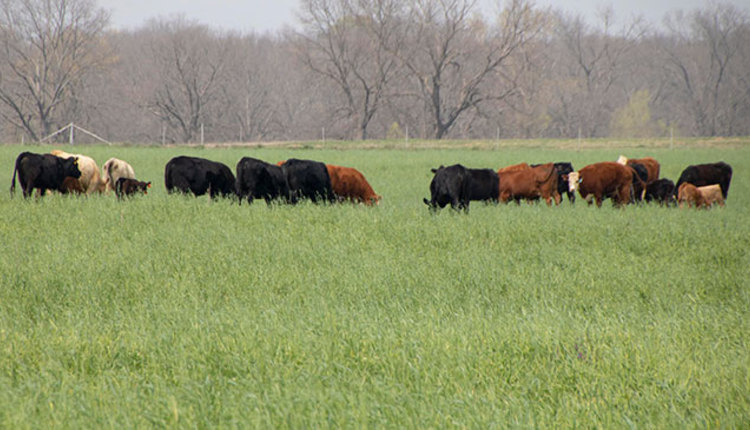
A combination of meager hay supplies and low wheat markets has set up a situation where grazing or haying winter wheat may have more value than if harvested for grain. In the University of Nebraska-Lincoln’s (UNL) BeefWatch newsletter, Aaron Berger, UNL extension beef educator, discusses the value of using winter wheat as a forage crop.
According to Berger, the current market value of beef-quality hay ranges from $80 to $150 per ton. That equates to $1.50 to $2.25 per cow-calf per day. In May and early June, with adequate moisture, an acre of wheat can provide 45 days or more of grazing for a cow-calf pair with a value of $2 per day or $90 per acre.
With those values, the option to graze wheat may have more value than harvesting a grain crop. “This is especially true if recent weather conditions or disease have damaged wheat and will reduce expected grain yields,” Berger adds.
Berger also states that in western Nebraska, an average daily gain (ADG) of 1.5 to 2.5 pounds per day can be expected in stocker cattle grazing wheat during May and early June. Cow-calf pairs may also benefit from the high-quality grazing that wheat creates after enduring this past stressful winter.
The benefits don’t stop there. Grazing wheat pasture will also give the pairs a chance to get out of muddy conditions, which will benefit calf health. It will also delay turnout onto native grass pastures, which will allow for adequate growth to establish.
When grazing wheat, fencing, water, and a sacrifice area during muddy conditions need to be considered. Grass tetany is also a potential risk, so make sure there is a high magnesium mineral supplement available to cattle two to four weeks prior to turn out and during grazing.
If grazing isn’t a possibility, harvesting wheat as hay is another viable option. A yield of over 2 tons per acre can be expected.
Also consider which type of cattle will receive the hay. If fed to young, growing cattle, harvest wheat at the boot stage or earlier to ensure a high-protein and energy content as well as palatability. An earlier harvest also opens the door to planting a summer annual forage into the stubble, if moisture conditions are good.
When being fed to dry beef cows, harvest can be delayed to achieve additional yield, but realize that nutritive value and palatability will be sacrificed.
“A partial budget that analyzes both costs and projected revenues associated with grazing cattle, cutting for hay, or harvesting wheat for grain can be helpful for evaluating these options,” Berger advises.
Berger also encourages producers to evaluate how grazing or haying will impact subsequent crop production, insurance, and potential government payments.

Kassidy Buse was the 2018 Hay & Forage Grower summer editorial intern. She is from Bridgewater, S.D., and graduated from Iowa State University with a degree in animal science. Buse is currently attending the University of Nebraska-Lincoln pursuing a master’s degree in ruminant nutrition.

